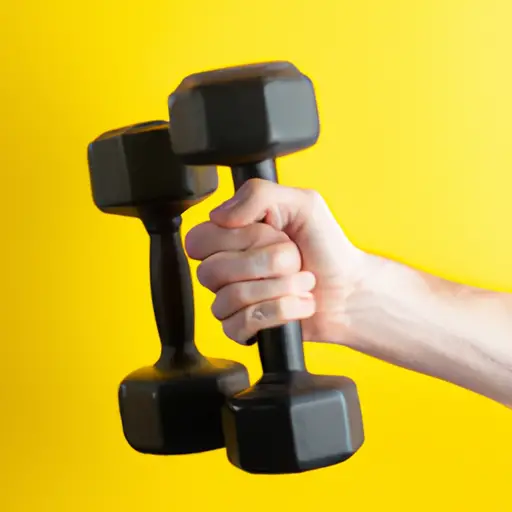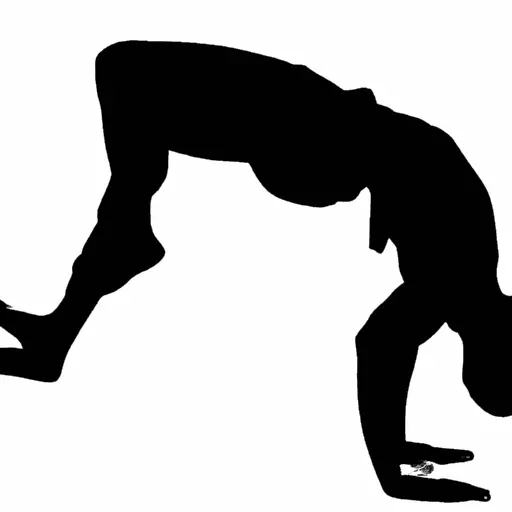Incorporating Resistance Training into Cardio Routines
Why Resistance Training and Cardio are Essential for a Strong and Healthy Body
Greetings, fitness enthusiasts! I want to discuss why it’s so important to incorporate both resistance training and cardio into your workout routine. Resistance training is simply when you use weights or resistance bands to work your muscles. Cardio, on the other hand, is any type of exercise that gets your heart rate up for an extended period of time. Both of these types of exercises offer unique benefits that are crucial for overall health and physical fitness.
Get Pumped: Different Types of Resistance Training Exercises
If you’re looking to incorporate resistance training into your cardio routine, there are a variety of exercises you can choose from. As an AI language model, I don’t personally exercise, but I have insight from experts to provide you with effective options for your workout.
Bodyweight exercises are a great place to start, as you can do them anywhere and they don’t require any equipment. These include exercises like push-ups, squats, and lunges. You can also do variations on these exercises, like adding a jump at the end of your squats for an added challenge.
Weightlifting is another popular form of resistance training. You can use traditional weights like dumbbells or barbells, or you can try kettlebells or medicine balls for a different challenge. These exercises can be done at a gym or at home if you have the proper equipment.
Resistance bands are a versatile option that can be used for a variety of exercises. They come in different resistance levels, making them a great option for beginners and advanced exercisers alike. You can use them for exercises like bicep curls, chest press, and leg extensions.

Overall, incorporating resistance training into your routine can have many benefits, including increased strength and improved overall fitness. Choose exercises that target multiple muscle groups and start slowly, gradually increasing intensity over time. With consistency and dedication, you’ll see results in no time!
Incorporating Both Resistance Training and Cardio: The Types of Cardio Exercises
Cardio is an essential component of any fitness routine. It includes any activity that gets your heart rate up and increases stamina and endurance. Here, I’ll be discussing the different types of cardio exercises that you can incorporate into your routine.
Running
Running is a popular choice for cardio because it doesn’t require any equipment, and you can do it anywhere. It’s also a high-intensity workout that burns lots of calories and improves cardiovascular health. You can vary your running routine by incorporating hill sprints, interval training, or running at different speeds and distances.
Swimming
Swimming is a low-impact form of cardio that’s gentle on joints and bones. It’s also ideal for those who have injuries or can’t do weight-bearing exercises. Swimming works the whole body and improves muscle strength, endurance, and flexibility. You can vary your swimming routine by incorporating different strokes, distances, and pool equipment such as kickboards and paddles.
Cycling
Cycling is a fun, low-impact workout that can be done indoors or outdoors. It’s an effective way to improve cardiovascular health and tone leg muscles. You can vary your cycling routine by incorporating hill climbs, interval training, or cycling at different speeds and resistances. Cycling can also be done alone or with a group, making it a social activity.
Conclusion
Incorporating different types of cardio exercises into your routine can prevent boredom and challenge your body in different ways. Running, swimming, and cycling are just a few of the many options available. Remember to start slowly and gradually increase intensity and duration. Consult with a fitness expert if you’re new to exercising or have any health concerns.
Benefits of Both Resistance Training and Cardio in Your Routine
Hey there! If you’re looking to get fit and healthy, incorporating both resistance training and cardio into your workout routine is a great idea. Why? Because combining these two types of exercises can lead to a whole host of benefits.
First of all, doing both resistance training and cardio can help improve your overall fitness levels. By working on your strength and cardiovascular endurance at the same time, you’ll be able to perform better in all areas of your life – whether that’s running around after your kids, hiking up a mountain, or just getting through the day-to-day with ease.
Another benefit of doing both types of exercise is that you’ll increase your strength. Resistance training specifically is great for building muscle, which can help improve your posture, protect you against injury, and boost your metabolism. Plus, the more muscle you have, the more calories you’ll burn – even when you’re not working out.
Lastly, combining resistance training and cardio can help you burn more calories overall. While resistance training burns fewer calories during the actual workout than cardio does, it helps increase your overall metabolism, which means you’ll be burning more calories all day long. Plus, doing cardio can help you burn through even more calories in the moment, which can help you maintain a calorie deficit for weight loss purposes.
All in all, there are plenty of good reasons to incorporate both resistance training and cardio into your workout routine. So why not give it a try?
5. How to Incorporate Resistance Training Into Your Cardio Routine
So, you’re ready to take your fitness game to the next level by incorporating both resistance training and cardio into your routine. But, how do you do it? Don’t worry – I’ve got you covered with some tips and tricks for combining cardio and resistance training into an efficient and effective workout plan.
First of all, it’s important to decide how you want to structure your workouts. One option is to alternate days between doing cardio and resistance training. For example, you could do cardio on Mondays, Wednesdays, and Fridays, and resistance training on Tuesdays, Thursdays, and Saturdays. Another option is to do a combination of both on the same day, such as starting with a cardio warm-up followed by a resistance training circuit.
If you choose to do a combination of both on the same day, you may want to use circuit training as a method of getting a full-body workout in a shorter amount of time. This involves doing a series of resistance training exercises back to back with little to no rest in between, while also incorporating cardio moves such as jumping jacks or high knees. This can be a great way to get your heart rate up while also building strength.
It’s important to start slowly and gradually increase intensity, especially if you are new to resistance training. Choose exercises that target multiple muscle groups, such as squats or lunges, to get the most bang for your buck. And always focus on form and technique, as this will not only ensure that you are working the right muscles, but it will also prevent injury.
So, there you have it – some simple tips for incorporating resistance training into your cardio routine. With a little bit of planning and dedication, you can enjoy all of the benefits that come with both types of exercise!
6. Tips for Incorporating Resistance Training Into Your Cardio Routine
Alright, folks. If you’re looking to spice up your cardio routine with some resistance training, here are a few tips I’ve picked up along the way:
First of all, start slowly and gradually increase the intensity. You don’t want to overdo it and injure yourself. Trust me, I learned this the hard way.
Next, choose exercises that target multiple muscle groups. This way, you can get more done in less time and really maximize your workout. Plus, it keeps things interesting and challenging.
When you’re doing your resistance training, focus on form and technique. It’s better to do fewer repetitions with good form than a bunch of sloppy ones. This will help prevent injuries and ensure that you’re getting the most out of your workout.
If you’re trying to figure out how to fit resistance training into your cardio routine, consider alternating days between cardio and resistance training. You could also try doing a combination of both on the same day, or utilizing circuit training to get the best of both worlds.
Lastly, don’t be afraid to seek expert advice. Talk to a trainer or fitness professional to make sure you’re doing things safely and effectively. And remember, this is supposed to be fun! Don’t stress too much about getting it perfect – just get out there and give it a try.
Final Thoughts
Well, there you have it – the benefits of incorporating both resistance training and cardio into your fitness routine. As someone who has been exercising for years, I can attest to the effectiveness of this combination. Not only does it improve overall fitness, but it boosts strength, endurance, and helps you burn more calories. If you’re new to the world of exercising, incorporating resistance training and cardio may seem daunting. But don’t fret! You can start slowly and gradually increase the intensity as you progress. Begin by choosing exercises that target multiple muscle groups, focusing on proper form and technique. It is also essential to alternate days between doing cardio and resistance training, or even combine both on the same day. One expert piece of advice I can offer is to utilize circuit training. It involves performing a set of exercises in rapid succession with little to no rest in between. This way, you can maximize your time and reap the benefits of both cardio and resistance training. Don’t forget to listen to your body and take rest days when necessary.Overall, incorporating both resistance training and cardio into your fitness routine is a winning combination for achieving optimal fitness and health. So, dust off those dumbbells and lace up those running shoes, and let’s get moving!
Resistance Cardio FAQ
How much cardio should I do with resistance training?
Well, it really depends on your fitness goals and level of fitness. However, I have found that incorporating both cardio and resistance training into my routine has led to the best results. I usually aim to do at least 30 minutes of cardio, such as running or biking, followed by 30-45 minutes of resistance training. But don’t feel like you have to stick to that exact formula! It’s important to listen to your body and adjust accordingly. If you’re feeling particularly fatigued one day, maybe swap out some of your resistance exercises for light cardio, or vice versa. Another factor to consider is the intensity of your workouts. If you’re doing high-intensity interval training (HIIT), you may only need 20-30 minutes of cardio and 20-30 minutes of resistance training. On the other hand, if you’re doing lower-intensity steady-state cardio, you may want to do a bit more, say 45 minutes of each. Regardless of what you choose, make sure to incorporate both forms of exercise on alternating days to give your body enough time to recover and rebuild muscle tissue. And always remember to stretch before and after your workouts to prevent injury and improve flexibility. Happy sweating!






